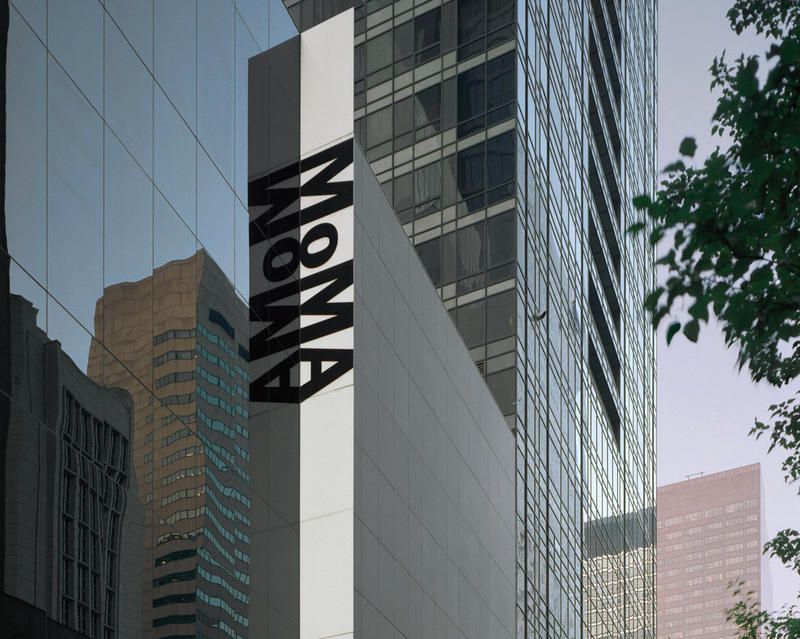
Exploding Cell
Peter Halley first devised his "cell and conduit" imagery in the early 1980s, when he emerged as a practitioner of the Neo-Geo style of geometric abstraction in New York. Since then he has continued to create large-scale geometric paintings in which a central rectangle is the "cell" to which are connected one or more incoming or outgoing circuits, or "conduits." Influenced by French Structuralist and Poststructuralist theory, the images are meant to evoke the hidden systems and ideologies that govern activity in postindustrial society.
In many of the approximately thirty editions Halley has produced since 1989, he has used printmaking to illustrate what is happening in the hermetic, coded world of his paintings. In 1994 he made a series of nine brightly colored screenprints, Exploding Cell, in which a cell mutates from a unified whole into states of contamination, explosion, meltdown, and finally emptiness or static. Presented in a comic-strip-style grid, the explicit narrative demonstrates that Halley's cells and conduits are not simply abstract compositions but symbolic, diagrammatic representations of architectural or social bodies.
Exploding Cell Wallpaper, first created in 1995, is a simplified, black-and-white version of the color screenprints. Conceived as a digital project, it expands the boundaries of traditional printmaking; each time it is to be installed, a silkscreen printer must generate the wallpaper sheets using files on a computer disk that The Museum of Modern Art owns. The files have also been used as the basis for an interactive project that the Museum produced in collaboration with Halley on its Web site (http://www.moma.org/onlineprojects/Halley/index.html). Halley appreciates that digital files can be easily stored and revised to generate new imagery. For example, he has also made various color versions of the wallpaper for use in installations of his paintings and prints.
Originally from TextEntryID 69556 (TextTypeID 127)
remains unauthorized pending resolution of url to online project. (http://www.moma.org/onlineprojects/Halley/index.html)
In a colorful, wall-sized grid of nine frames, a cartoon-style narrative unfolds. In the first frame, a central square (or "cell," in Halley's terminology) suggests a building in an empty landscape. Windowless and doorless, it has no apparent entrance or exit save for two "conduits": an underground pipeline below and a smokestack above. In the subsequent frames, read left to right like a comic strip, this cell is transformed into states of contamination, explosion, meltdown, and, finally, nothingness. For the installation Halley covered the walls behind the nine framed works with a simplified, black-and-white, endlessly repeatable version of these color screenprints. Conceived as a digital project, this wallpaper expands the boundaries of traditional printmaking; each time it is installed, a silkscreen printer must generate new sheets using digital files owned by MoMA. Influenced by theories about the hidden systems and ideologies that govern activity in postindustrial society, Halley continually re-creates his cells and conduits in ongoing series of painted and printed variations. In his printmaking he allows himself more freedom to play with their narrative possibilities, demonstrating that they are not simply abstract compositions but symbolic, diagrammatic representations of architectural and social bodies.
Credit: Gift of the artist
1994
Series of nine screenprints
92.0 x 119.7 cm
670.1996.1-9
Image © 2019 Peter Halley Text © MoMA - Museum of Modern Art, New York
Where you'll find this

The Museum of Modern Art
Permanent collection



